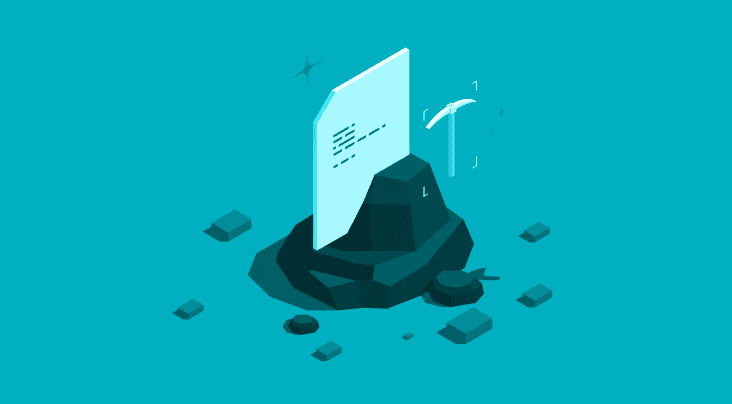In today's data-driven era, organizations worldwide are increasingly feeling the heat of regulatory agencies and governments as they actively introduce data privacy regulations. With data sprawling across the digital landscape, organizations are tasked with the responsibility of managing and safeguarding personal information, particularly sensitive data.
Since its enactment, the California Privacy Rights Act (CPRA) has imposed more stringent requirements and obligations for organizations operating in California and enhanced consumer rights (data subject rights). A crucial aspect of fulfilling these obligations is CPRA data mapping. This process entails developing a comprehensive inventory of data assets, monitoring the flow of personal data within the organization, and ensuring compliance with CPRA’s provisions and evolving regulatory requirements.
This guide explores the fundamental principles of CPRA data mapping, why it is essential for CPRA compliance, and how organizations can optimize Securiti’s data mapping automation.
What is CPRA?
The CPRA is California’s statewide data privacy law that aims to protect the digital privacy of California residents. The CPRA came into effect on January 1, 2023, and requires all organizations to audit their data collection, storage, processing, and sharing activities to ensure they comply with its provisions.
The CPRA is an extension of the California Consumer Privacy Act (CCPA), an earlier law that went into effect on January 1, 2020. The California Privacy Protection Agency (CPPA), the country's first specialized data protection agency, will enforce the CPRA.
Learn more: An Ultimate Guide to California Privacy Rights Act (CPRA).
Why Data Mapping is Essential for CPRA Compliance
To ensure compliance with the CPRA and the evolving data privacy landscape, CPRA data mapping entails identifying and monitoring the flow of personal data within an organization, including its collection, storage, processing, and sharing. With data mapping, organizations can better understand their data environment and establish the right safeguards in place to secure sensitive data.
The CPRA introduces several specific requirements that make data mapping necessary for organizations to ensure compliance. Here are some key CPRA requirements and general operational requirements that necessitate data mapping:
The CPRA expands the definition of personal information, necessitating that organizations map data to identify all categories of personal information they collect, process, and store. Organizations utilizing data mapping can swiftly identify the locations where personal information is stored, how it is being processed, and with whom it is being shared within their systems.
CPRA introduces a new category known as ‘sensitive personal information’ (SPI), which comprises data such as social security numbers, driver's license numbers, financial information, precise geolocation, racial or ethnic origin, and biometric data. To comply with specific regulations regarding the use of SPI and implement appropriate protections, organizations need data mapping to identify SPI.
3. Data Subject Rights
CPRA provides California residents with specific data subject rights regarding their personal information, such as the right to access, the right to delete, the right to correct, the right to opt-out of sale/share, and the right to data portability, among several other rights. Organizations can efficiently locate and retrieve the required data to honor data subject requests (DSRs) through data mapping.
4. Transparency and Accountability
Data mapping builds a comprehensive understanding of an organization's data flows and processing operations, providing transparency into data processing activities. To comply with specific CPRA provisions, data mapping is crucial as it explicitly demonstrates an organization’s methods for collecting, using, and sharing personal information.
5. Data Minimization and Storage Limitation
CPRA mandates that the personal information collected is adequate, relevant, and limited to the extent necessary for the intended purposes. It also requires that personal information is not retained for longer than necessary. By utilizing data mapping, organizations can ensure compliance with these principles and gain a better understanding of the data they possess.
Related: What is Data Minimization Under the CPRA?
6. Purpose Limitation
Organizations that collect personal information are required to notify individuals of their intended use and obtain the individual’s explicit consent before using the information for any other purpose. Data mapping enables organizations to align data processing activities with disclosed purposes.
7. Third-Party and Service Provider Management
CPRA requires organizations to have contracts in place with third parties and service providers. Data mapping helps organizations swiftly identify all third parties and service providers that have access to personal information as well as track data flows across various third parties, service providers, and contractors.
8. Security Obligations
The CPRA requires organizations to establish appropriate security measures to prevent unauthorized access and breaches of personal information. Data mapping is essential for swiftly locating the processing and storage locations of personal information, enabling organizations to establish security measures.
9. Automated Decision-Making and Profiling
CPRA provides consumers with the right to know about profiling, how automated decision technologies work, and their likely outcomes. Data mapping streamlines the identification process of where automated decision-making systems are utilized and what information they process.
Related: Automated Decision-Making under GDPR and CPRA - A Comparative Analysis
10. Risk Management
Data mapping enables organizations to swiftly identify potential risks to data privacy and security. The mapping process provides a holistic view of where sensitive information is kept and how it is moved around the company, making it easier to establish adequate safeguards where necessary and minimize the risk of data breaches or unauthorized access.
11. Regulatory Reporting and Audits
A comprehensive data mapping activity makes it easier to provide accurate details about data processing activities carried out by an organization in case the regulatory agency initiates any audit or regulatory investigation. A robust data mapping tool in place demonstrates a commitment to compliance and significantly expedites the audit process.
12. Breach Response
If an organization is targeted by malicious actors and is exposed to a data breach, data mapping helps swiftly identify impacted individuals and impacted data (personal and sensitive information) so that organizations can promptly respond to the data breach as part of CPRA’s data breach requirements.
13. Facilitating Privacy Notices and Disclosures
The CPRA mandates that businesses provide clear and transparent privacy notices to consumers, explaining what personal data is collected and for what purposes. Data mapping ensures that these notices are accurate and reflect the organization's actual data practices.
Without a proper data map, businesses might struggle to provide accurate disclosures, leading to potential non-compliance issues.
Steps to Effective Data Mapping for CPRA Compliance
Here's a general guide to implementing an effective CPRA data mapping process:
1. Identify and Classify Data
Organizations must begin the process by identifying the data they have of individuals and where that data is located (on-premise, cloud, or hybrid systems). Once identified, the classification and categorization process can begin.
This data includes various types of personal information, such as contact details – names, addresses, email addresses, and phone numbers; identifiers including social security numbers, driver's license numbers, and passport numbers; commercial information like records of personal property and purchases; biometric data such as fingerprints, voiceprints, and facial recognition; internet activity including browsing and search history and interactions with websites or apps; geolocation data tracking physical locations or movements; professional information like job titles, employers, and work history; and educational records.
2. Map Data Sources and Collection Methods
Organizations must identify data sources and internal systems that collect data, such as websites, mobile apps, and customer service interactions. This also applies to cookies, transaction data, online forms, and consumer surveys.
3. Document Data Use and Processing Activities
Organizations must maintain comprehensive records of data collection, storage, processing, and sharing activities. This enhances transparency, reinforces data governance, and ensures compliance with CPRA’s and other data protection regulations. Documentation usually covers data sources, data types, processing objectives, data flow charts, and access controls. It also helps identify data dependencies and risks.
4. Identify Data-Sharing Practices
Organizations must identify data-sharing practices, such as information shared with third parties, including service providers, affiliates, and marketing partners. Data mapping helps organizations identify any data shared outside the organization and the granularity at which it is exposed to third parties.
5. Assess Data Security Measures
Data mapping provides transparency into an organization's data security practices by enabling organizations to establish access controls to determine who can access data and under what conditions. This includes maintaining data encryption both in transit and at rest to safeguard sensitive data from unauthorized access. Additionally, maintaining comprehensive audit trails is crucial for documenting all access and changes to personal data, leading to easier monitoring and accountability.
Optimize Your Data Mapping with Securiti
Securiti’s Data Command Center leverages contextual data intelligence and automation to unify data controls across security, privacy, compliance, and governance through a single, fully integrated platform. Securiti’s data mapping automation helps organizations automate the process, which is crucial for compliance with data protection regulations such as GDPR, CCPA, and others.
Securiti’s Data Mapping Automation provides organizations with comprehensive data discovery, efficient data risk monitoring, data asset cataloging, global data map visualization, automated risk assessments, privacy impact assessments (PIA), regulatory compliance assurance, real-time collaboration with stakeholders, and more.
The process starts by collecting data on assets and processes, either through importing from current databases or using a user-friendly portal. Users can begin privacy impact assessments and create processing activity records through a central data catalog to comply with privacy regulations. Visual data maps show cross-border transfers, significant flows, and risks, updating dynamically as data mapping automation detects changes in data types, volumes, subject residency, and access rights.
This automation maintains up-to-date risk assessments and links personal data across multiple data stores to create detailed people data graphs. Securiti’s AI-driven PrivacyOps tool automates DSR fulfillment and privacy compliance tasks, easing the shift from manual procedures, minimizing cost, and reducing risks.
Request a demo to witness Securiti in action.







































